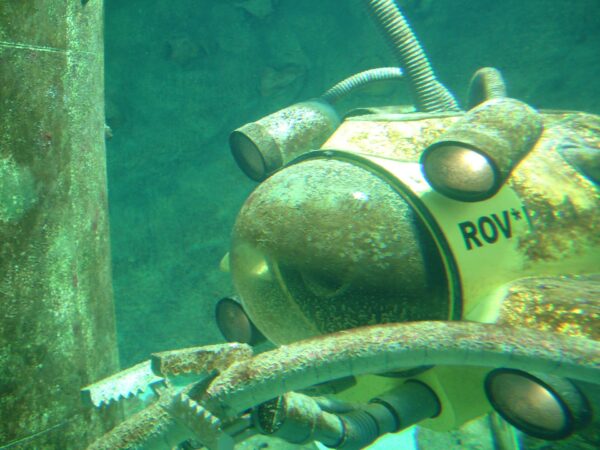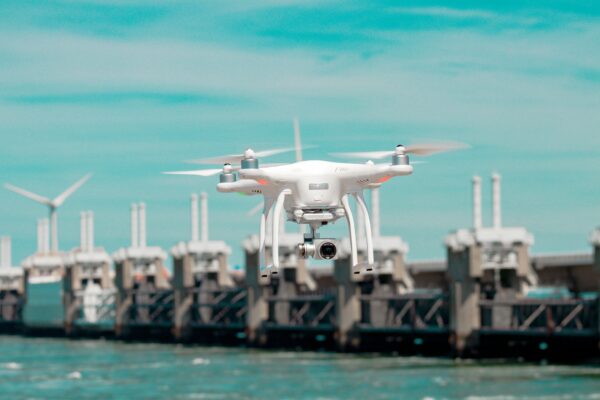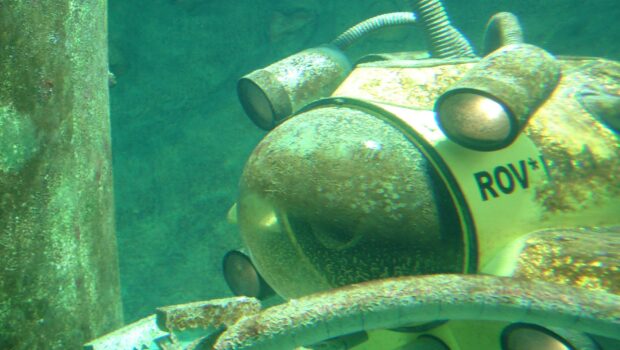How Robots Can Make Offshore Energy More Sustainable
The eco-conscious movement redefined American production, manufacturing and energy sourcing standards. Residents and consumers require that government and commercial sectors take higher sustainability measures. We can increase the efficiency and shrink the carbon footprint of the nation by expanding offshore wind farming.
President Biden established the Build Back Better plan, funding the clean energy industry’s growth. The goal is to reach carbon neutrality in the coming decades. In addition, he can allocate a portion of the funding to offshore energy’s technological advancements, increasing its sustainability.
Wind Power’s Marine Ecosystem Interference

Current offshore wind power development is contradictory to the industry’s goals. Installation and maintenance practices interfere with marine species habitat and ecosystem consistency. In addition, a generation of pollution and invasive species expansion degrades offshore energy’s sustainability.
A sustainable industry must be economically feasible, socially equitable and protect the environment. Unfortunately, seabed disruption, noise pollution, electric interference and invasive species growth degrade offshore energy’s environmental efficiency.
During wind turbines’ ocean installation process, professionals drill into the seafloor or seabed, ensuring structural stability and safety. The sediment generated through drilling reduces species visibility, buries food sources and disperses contaminants. It also changes the seafloor’s composition.
Tripod installation places three stabilizing legs into the seabed, invading organic spaces with harmful materials. Hammering into the seafloor destroys natural habitats, forcing aquatic species to relocate. Without adequate food and protection, most species cannot survive the transition, causing adverse biodiversity effects.
Additionally, the noise pollution produced by the generator and gearbox affects marine species’ health and well-being. When turbine blades rotate and generators produce electricity, noise travels down the tower, radiating sounds beneath the waterline. Many species avoid loud noises and vibrations, causing them to relocate away from turbines.
Offshore wind generation also affects the ecosystem from cables’ electromagnetic fields (EMF). Like noise pollution, many species avoid EMFs, degrading marine biodiversity. Turbines’ association with invasive species growth further disrupts the ecosystem’s functionality.
The physical structures prove unsustainable because of their high maintenance requirements. As the climate changes, tropical storm frequency increases. Weather disruption causes turbine damage, reducing their energy efficiency.
Robotic Solutions
Fortunately, environmental engineers and scientists developed green technology, increasing the sustainability of offshore wind turbines. ABB Marine and Ports developed an ocean turbine maintenance and inspection device, called the OCTOPUS, with limited environmental disruption.
The device can examine a turbine’s seafloor impact, helping researchers generate marine life safety and protection solutions. They may also gather data regarding cables’ electromagnetic field effects on species.
Another research team from the University of Southampton designed an efficient robot, increasing turbine sustainability. The device looks like a conventional jellyfish and mimics its movements. The jet pulsing technology reduces marine ecosystem disruption, disguising itself as a non-invasive creature.
Limited marine species disruption helps researchers efficiently conduct turbine inspections and maintenance. With further development and research, the device can help reduce installation, noise and electromagnetic pollution generation.

The Importance of Technological Advancements
Though technology remains in the developmental stage, we must continue accessing solutions to expand the offshore wind production industry. Wind energy is essential for developing national carbon neutrality. A single farm in Texas generates enough wind power to eliminate 160,000 tons of carbon emissions.
The low cost of wind-produced electricity can help the U.S. develop an affordable, zero-emission energy grid. Wind power is up to 116 dollars per megawatt-hour cheaper than fossil fuel-derived electricity. With additional cost-efficiency and sustainability enhancements, wind energy could significantly reduce national carbon emissions.
Improving offshore wind power technology with robotics can help us meet the Paris Agreement’s goal. Biden also signed the U.S. onto the Agreement during his first day in office. The signature confirms our commitment to climate change prevention.
The Paris Agreement signifies efforts to reduce the global temperature by two degrees Celsius. Climate change prevention can protect the ecosystem and resource longevity. We can contribute to atmospheric conservation by growing the nation’s renewable energy industry.
Decreasing Your Impact
Though offshore wind power has its environmental limitations, researchers are working extensively to increase its sustainability. Renewable energy sources are significantly less ecologically degrading than coal or natural gas-derived electricity. You can contribute to climate change prevention and shrink your carbon footprint by investing in clean energy.















